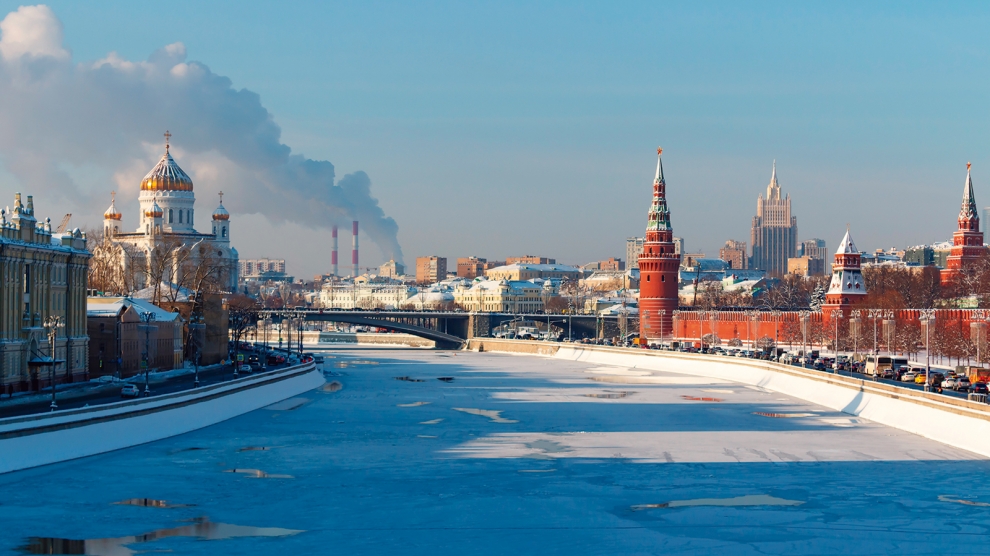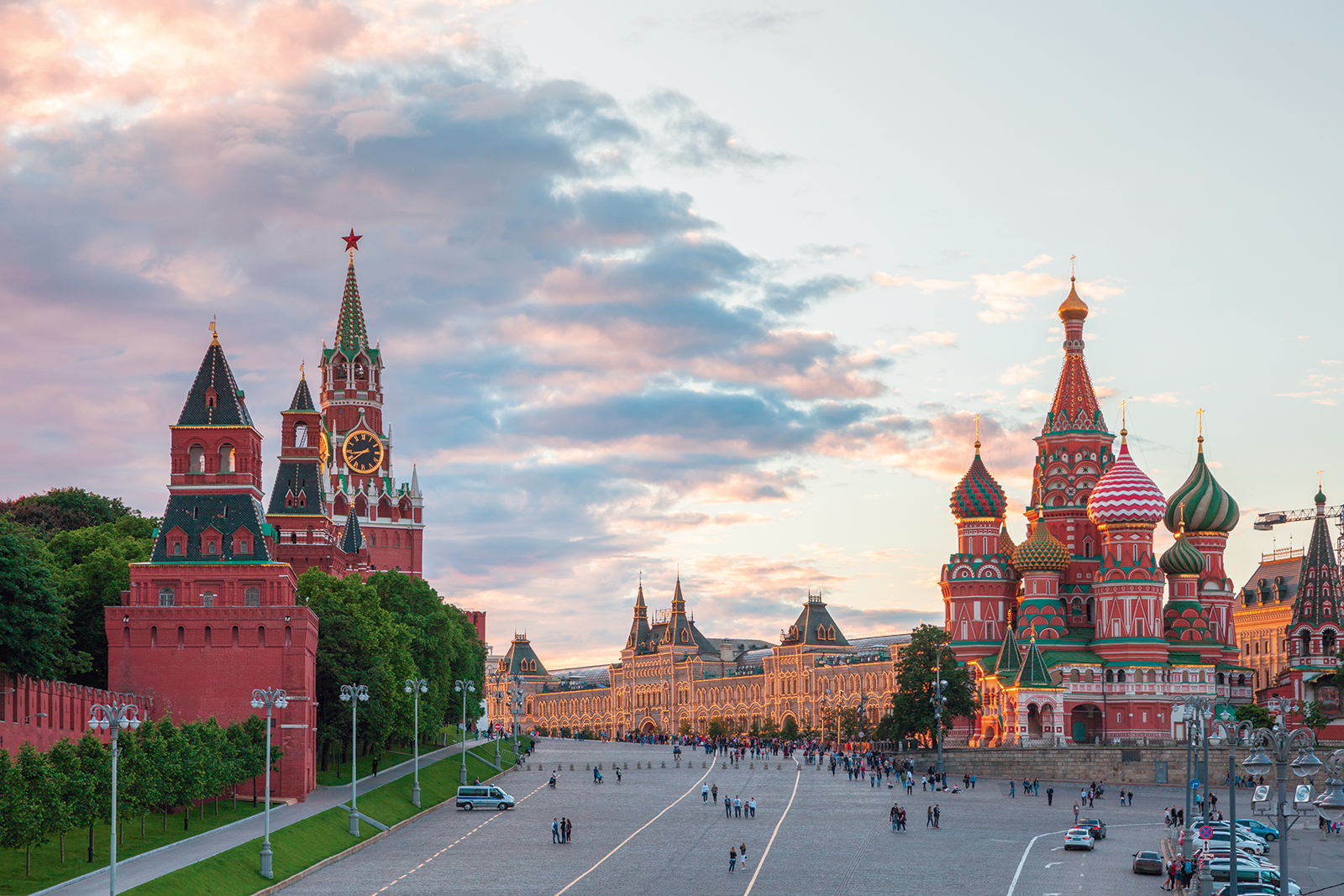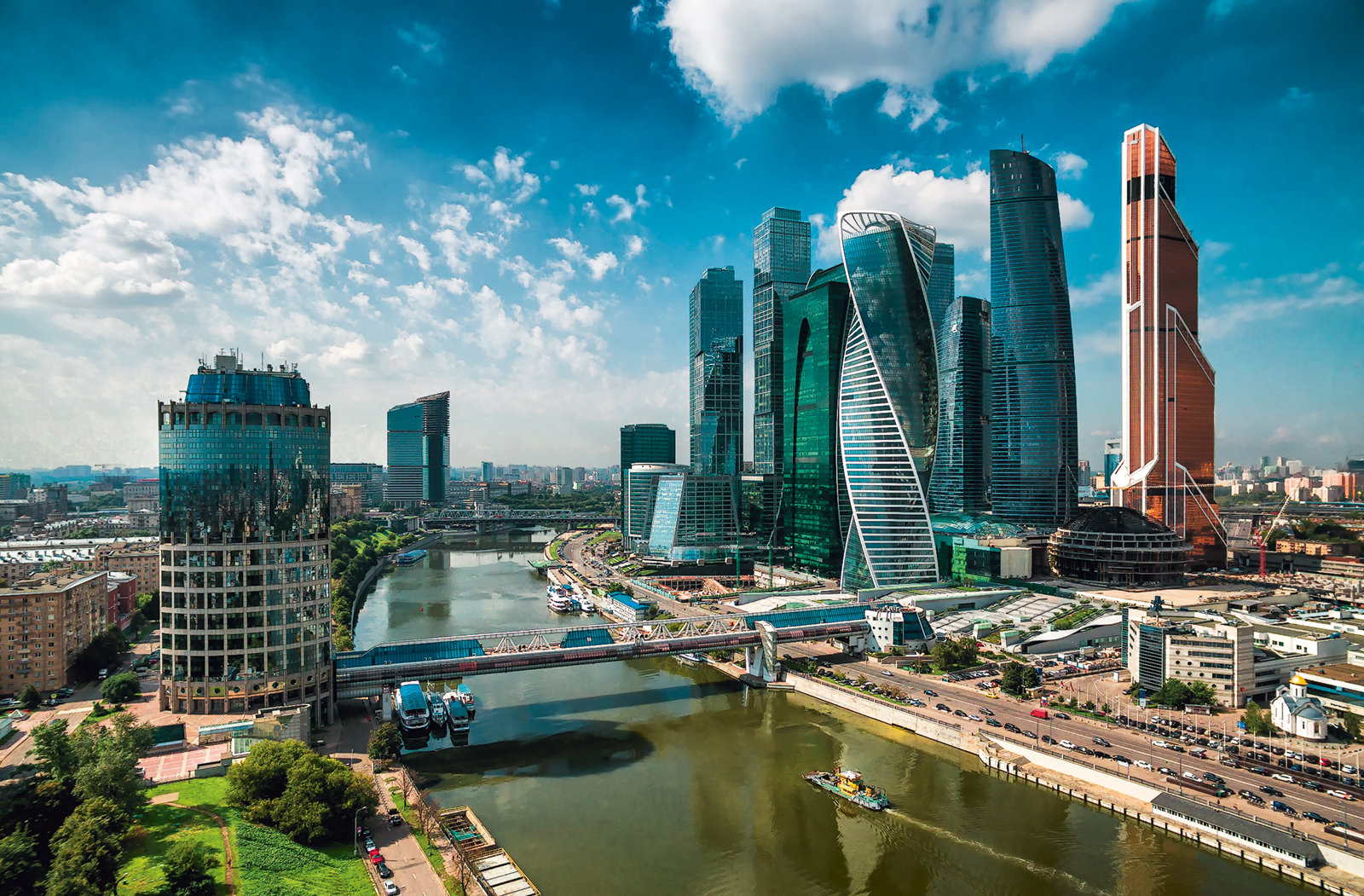Four years after the outbreak of the Ukrainian crisis EU – Russia relations remain in a poor state. With no business as usual approach on either side, many bilateral mechanisms of cooperation have been halted or abandoned. Ambitious projects of the previous period aimed at creating multiple common spaces between the EU and Russia, moving toward a Greater Europe are on hold, if not completely abandoned. The information war between Moscow and Brussels is in full swing. A number of European governments directly accuse the Kremlin of subversive interference in their domestic political affairs by supporting euroscepticism, populism and separatism.
At the same time, this relationship, with all its setbacks and mutual disappointments notwithstanding, has demonstrated real resilience. After experiencing a sharp decline, EU – Russia trade has bounced back. The EU is still by far the largest single economic partner for Russia, accounting for more than two fifths of the county’s overall trade. Russia continues to apply for and to receive more Schengen visas than any other country in the world. The EU remains the main point of destination for Russian students seeking education abroad. Cross-border cooperation has clearly survived the no business as usual pattern. In sum, it seems that European-Russian divergence since 2014 has not yet reached the point of no return.
Today both the European Union and Russia appear to be moving targets, with many uncertainties about their respective development trajectories. The challenge for the EU is to overcome the multiple crises it confronts today – repercussions of Brexit, the rise of right populism, the decay of public trust in European institutions, deep divisions over the sensitive matter of migration, continuous troubles in the Eurozone, and so on. It would not be an over-exaggeration to argue that Europe has to reinvent itself to play a significant and legitimate role in the emerging world, which is likely to be less and less Europe-centred in the foreseeable future. Above all, Europe has to be united, strong and coherent; whether all EU member states are fully committed to these goals in 2018 and beyond remains to be seen.
Russia’s challenges are no less formidable. First, it has to shift to a new economic development model. The old one that emerged in the early 2000s is essentially a resource-based, state-controlled rent-seeking model; it has definitely depleted its potential and looks antiquated, if not completely dysfunctional today.
Second, Russia has to strengthen its institutions. Today, the institutional skeleton of the country looks inadmissibly weak and inefficient; without a stronger institutional foundation, it will be increasingly difficult to maintain social and political stability in the country.
Third, Moscow will have to address in a serious way multiple foreign policy problems accumulated since the beginning of the century – from almost completely ruined relations with the West to bitter disputes with many of its post-Soviet neighbours. Out of these three challenges the need for economic reforms looks the least controversial and least politically sensitive today; however, even moderate structural changes in the Russian economy are saturated with many political risks and uncertainties for the Kremlin.
Where do all these independent variables get us, once we start thinking about the future of EU – Russian relations? Let us limit ourselves to the new six-year political cycle in Russia (2018 -2024), though this cycle does not necessarily coincide with much more controversial and less definable political cycles in Europe. Let us also reduce the future trajectories of Europe and Russia to just one dimension for each of the actors. For Europe, it will be an axis with a very weak, fragmented and incoherent EU on the one hand, and a very strong, coherent and well-managed EU on the other. For Russia, it will be an axis stretching from a rent-seeking, state-controlled, and mostly self-reliant model (no reforms) and a more innovative, less state-controlled, foreign markets focused model (radical reforms). Using these two axes as horizontal and vertical, we end up with a matrix containing four quadrants; each of them stands for a scenario of the future EU – Russia relationship. Each of the scenarios has its logic, its driving forces, its limitations and its likely implications for both sides.
No Man’s Land (A Weak Europe, No Reforms in Russia)
Under this scenario neither the European Union nor Russia is able to rise to the occasion and address its respective challenges in a serious way. The EU remains fragmented, torn apart by multifaceted crises, unable to pursue a consistent development strategy or a coherent European policy. Russia avoids any substantive economic reforms counting on global oil prices going up, on a slow recovery of the national economy and on the traditional resilience of the Russian population. The EU and Russia’s interests in each other are limited and they gradually diminish further.
This scenario results in a “balance of mutual weakness.” Both sides avoid far-reaching initiatives, considering the status quo to be not an ideal, but generally acceptable option. Russia tries to undermine EU sanctions incrementally, but the European Union sticks to sanctions as one of the few remaining symbols of European integrity. Ukraine is a mess with a low intensity conflict continuing in Donbass and with major European counties demonstrating little appetite for a new Marshall Plan to assist Kyiv, while Russia tries to isolate itself from an unstable and hostile neighbour. The EU has no visible role to play in European security; NATO remains the only game in town. Russia relies more and more on China; the asymmetry of this relationship grows over time. More generally, the international influence and stature of both the European Union and Russia go down.
A New Cold War (A Strong Europe, No Reforms in Russia)
This scenario implies a steady change of balance between the two sides in favour of Europe. The turning point will be European development in 2018 or 2019; the German-French backbone of the European Union survives Brexit and helps other European nations to overcome current disagreements, to defeat populists and to resolve burning Eurozone problems. The European Union pursues its goal of achieving strategic autonomy from the United States. The European economies become more innovative, vibrant and competitive. Russia follows the path outlined in the first scenario.
This scenario is likely to result in stronger European pressure on Russia. The policy of containment develops into the policy of rollback. Ukraine, firmly backed by the EU, becomes a success story, and the option of EU membership for Ukraine is back on the table. Moreover, practically all the nations ‘in between’ gravitate to the European Union and away from Russia. The ‘Russian world’ shrinks to the borders of the Russian Federation. Moscow gets more and more concerned about European influence on the Russian population and attempts to pull down a new Iron Curtain across Europe. Domestically, the Kremlin positions Russia as a besieged fortress and tries to prevent political changes inside the country by promoting nationalistic, anti-Western movements and parties. On a larger scale, the European Union becomes a major provider of global commons, while Moscow is widely accused of being a ‘global spoiler’.
Eurasian Melting Pot (A Weak Europe, Reform in Russia)
Europe remains weak, fragmented and indecisive, while Russia demonstrates an ability to reinvent itself, above all, in the economic domain. The quality of governance goes up, the level of corruption and abuse of power by the state go down, the country finally gets an independent judiciary, and -most importantly – a fully independent and respectful court system. The structure of the Russian economy changes in the direction of innovative, high value-added sectors, small and medium-sized enterprises increase significantly their share in the gross national product. Political reforms may continue to lag behind the economic transformation, but civil society is booming and the political system slowly, but steadily evolves in the direction of stronger institutions and more pluralism.
In this case, the balance of power inevitably shifts in Russia’s favour. The new Russia’s economic model looks more attractive to its neighbours, while continuous crises in the European Union discourage even the most consistent champions of the European project within Russia and within the countries along its borders. Moscow manages to stabilise its uneasy relations with Ukraine, consolidates the Eurasian Economic Union, and makes full use of the disagreements and conflicts within the European Union.
However, since Europe is in the process of long-term decay, Moscow continues to pursue its pivot to Asia as a more promising direction of economic and political expansion. Instead of a common European space stretching from Lisbon to Vladivostok, Russia aims at a common Eurasian space stretching from Shanghai to St. Petersburg. The Eurasian advance to the West incrementally absorbs bits and pieces of Europe in various forms (for example, the One Belt, One Road project). Russia’s international influence is on rise, the influence of the European Union is on decline.
Double-Headed Greater Europe (A Strong Europe, Reforms in Russia)
Finally, what do we see in the fourth quadrant, with both the European Union and Russia demonstrating equal capacity to address their problems and to find solutions to difficult questions without further hesitations and procrastinations? What is likely to happen if Brussels and Moscow get stronger at the same time? Conventional wisdom suggests that if two international actors increase their capacities simultaneously, if their aspirations and ambitions grow in parallel with the other side, a clash between them is practically unavoidable. However, this assumption is true for closed systems with limited resources available. This is not the case with the contemporary international system.
One can imagine a stronger European Union and a reformed Russia (together with other members of the Eurasian Economic Union) constituting two interdependent pillars of a Greater Europe. These two entities continue to be asymmetrical in many ways for a long time, but any visible progress in structural economic reforms in Russia is likely to make these asymmetries less significant and less disturbing for the EU. Moscow states its fundamental interest in a stronger EU, Brussels recognises the EAEU as a strategic partner. At the end of the day, relations between the EU and the EAEU become similar to those between the EU and ASEAN. However, given the geographical proximity, cultural closeness and common history, the EU and the EAEU together go beyond cooperation between two integration projects; their concerted efforts help to complete an ambitious task of uniting and cultivating vast spaces of Europe and North Eurasia. Ukraine becomes a natural bridge linking the EU and the EAEU; Kyiv might still entertain the idea of joining the EU at some point in the future, but for a long anticipated transition period, it can benefit from its special position within the emerging European architecture. Even under the best circumstances, this ‘double-headed Greater Europe’ is not going to emerge by 2024. However, a slow but steady movement in this direction changes dramatically the atmosphere between Moscow and Brussels. The combined political and economic weight of the EU and Russia in the international system increases dramatically.
When trying to predict the likely future of EU – Russia relations one should keep in mind that this relationship has always been and will continue to be influenced by many external factors. For the European Union the most important factor is arguably the dynamics of the transatlantic alliance with the United States. If this alliance survives the Trump administration without major complications and crises, the incentives for the European Union to work towards a more active and less US-dependent pattern of the European foreign and defence policies will be lower. If Trump is a symptom of a long-term readjustment of the American role in international relations, European politicians will face a compelling need to advance the EU as a global player separate from Washington. This shift will create both new opportunities and new challenges for EU relations with Russia.
For Moscow, the single most important external factor will be its relations with Beijing and, in a more general sense, the future of China itself. Will China continue its seemingly endless economic rise, or will we see it slowing down? How stable is the Chinese political system going to be a couple of years from now? Have Russian-Chinese relations reached their climax or will the two countries move to an even closer political, military and economic partnership?
It would be tempting to argue that a booming and vibrant China as a Russian strategic partner makes Europe less important for Russia by offering Moscow a viable alternative. However, if China enters a new stage in its economic and political development, it might need Russia less than it does now and the asymmetries in this relationship might significantly increase. Thus, a stronger China might generate more incentives for Moscow to look for new opportunities in Brussels.
In a more general sense, relations between the European Union will depend on the evolution of the international system at large or, more precisely, on the future of the liberal world order. If the world is indeed entering an extended period of instability and conflict, if nationalism, populism and protectionism continue to gain momentum across the globe, if international institutions are increasingly marginalised and international law becomes immaterial, relations between Brussels and Moscow are likely to follow the general trend.
If the global liberal order overcomes the current crisis, international institutions are successfully reformed and re-energised, if globalisation really is back with a vengeance, the European Union and Russia will be pushed towards closer cooperation with each other in various fields. Of course, there might be a number of black swans affecting this relationship – from a global natural disaster to a new generation of international terrorism.
The odds are that the choice between the four above-mentioned scenarios will not be clear and finite. More likely, each side will try to combine elements of various scenarios to serve its immediate interests. The inertia of the previous period will have a profound impact of any strategy that Brussels and Moscow can consider. However, some important decisions on both sides will be taken soon enough, maybe as early as this year.
—
The views expressed in this opinion editorial are the author’s own and do not necessarily reflect Emerging Europe’s editorial policy.




Add Comment